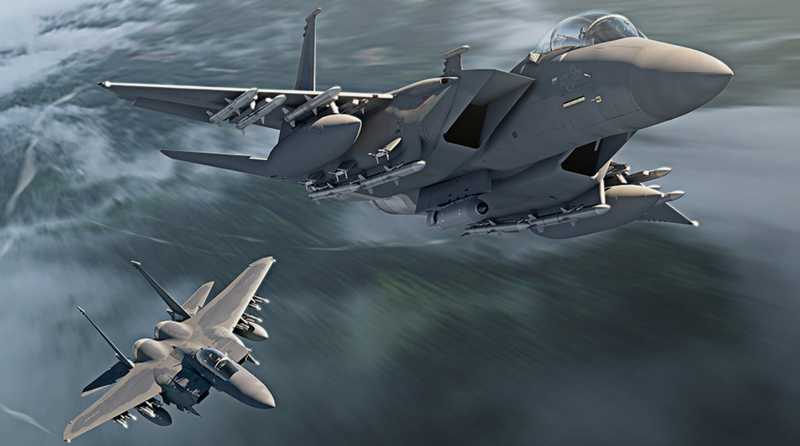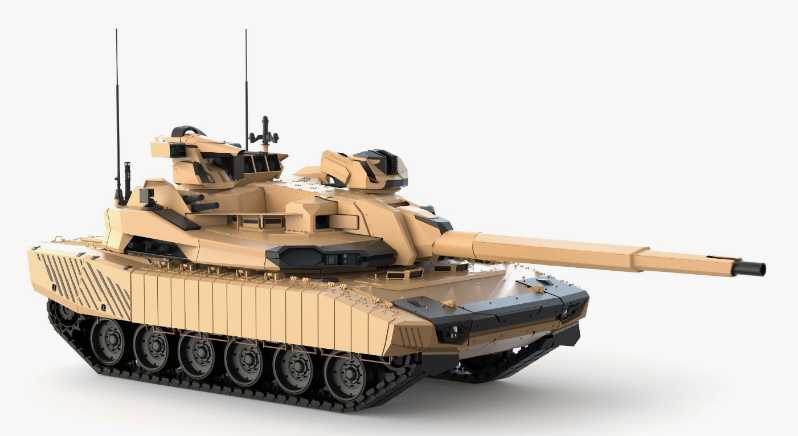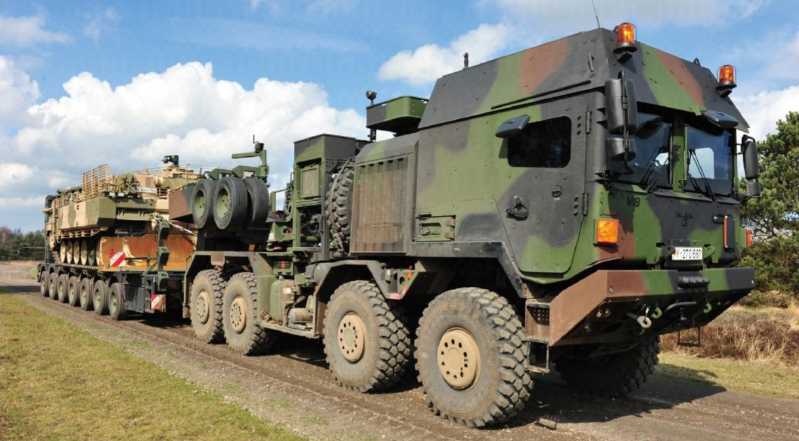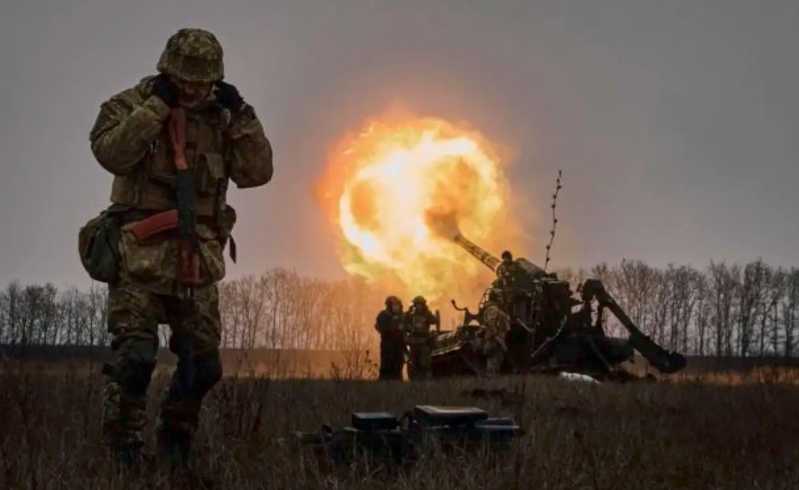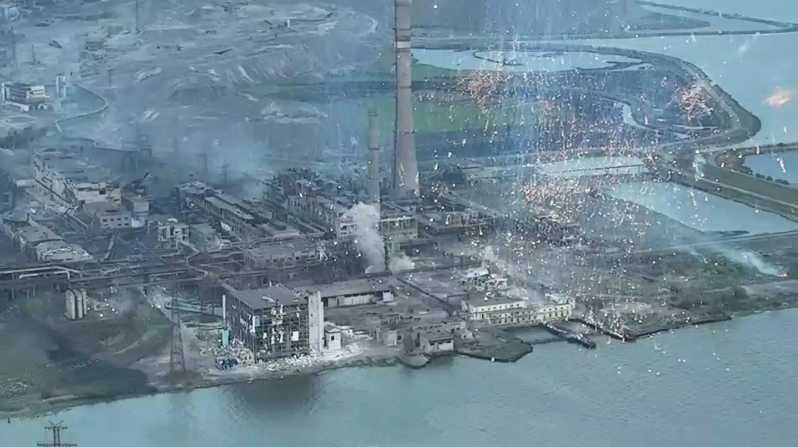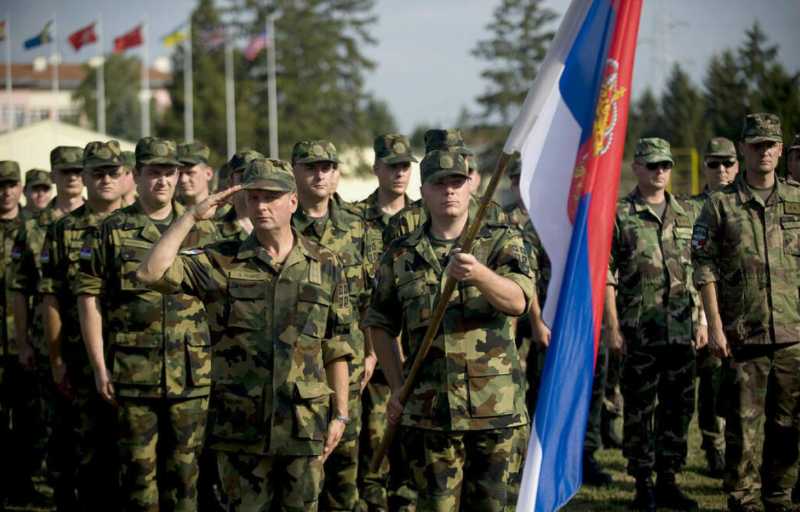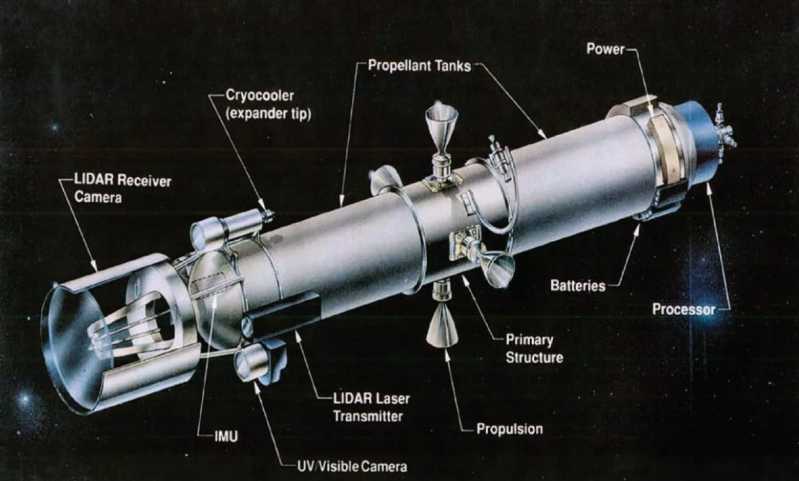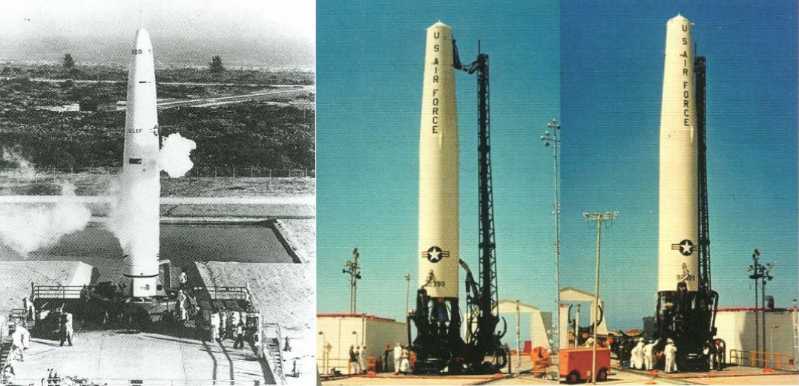In the spring of 1948, in order to cooperate with the strategic offensive of our army in the northwest and the Central Plains and create conditions for the liberation of the entire Shanxi Province, the Shanxi-Hebei-Shandong-Henan Military Region decided to launch the Linfen Campaign. This battle lasted 72 days, annihilated more than 25,000 Kuomintang troops, and eliminated the last stronghold of the Kuomintang troops in southern Shanxi. However, our army suffered more than 13,500 casualties in this battle. It was an especially difficult battle during the War of Liberation and was also listed as a textbook example of a tough battle by our army.
"Eastern Maginot Line"
Linfen, the ancient Pingyang Prefecture, is located in the Fenhe Valley of the southern Shanxi Plain. It is located in the east of Taiyue and has the Tongpu Railway running through it. It is the throat connecting the south and the north; it is located in the west of Luliang and has the Fenhe River as a barrier. It is a hub connecting the east and the west. Linfen City was built on a large earthen mound based on the natural terrain. It is high inside and low outside, with high walls and deep trenches, shaped like a lying cow. It is easy to defend and difficult to attack. It is commonly known as the "Lying Cow City". It has been a strategic location that military strategists must fight for since ancient times. The city defense of Linfen was built by the Japanese army and reinforced by Hu Zongnan and Yan Xishan’s troops. Four defensive positions were built to form a complete defense system.
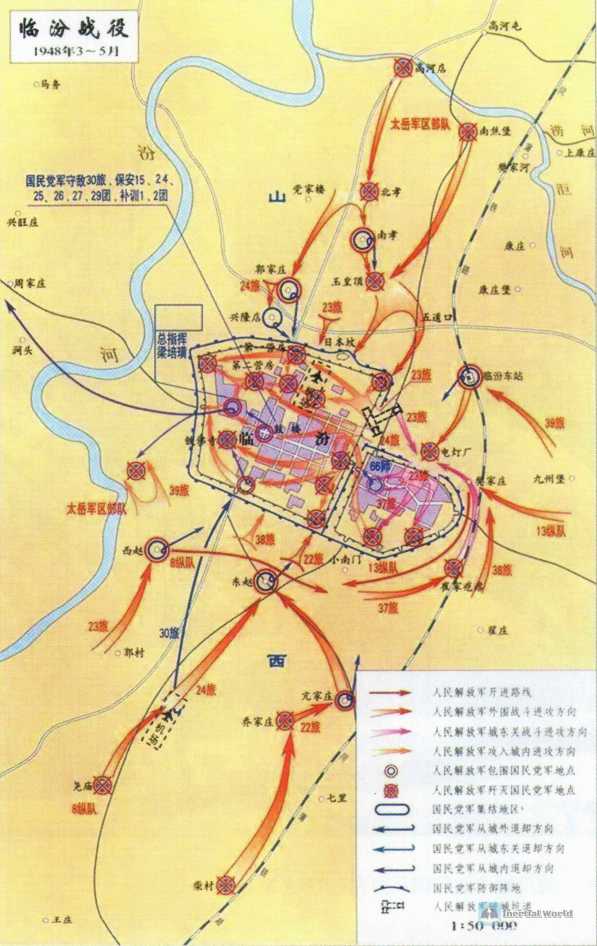
The first line is the outer guard position. It consists of villages 5 to 15 miles around the city. There are high and dark firepower points and obstacles such as outer trenches, slope splitting, deer forts, electric grids, mines, etc., forming independent support points. Each point has a garrison ranging from a company to a battalion, equipped with heavy machine guns, mortars, and mountain cannons. They can fight independently and support each other.
The second line is the city defense position. It consists of 31 bunkers around the city and the East Gate. 3 bunkers form a group, arranged in a triangular shape, ranging from 50 to 80 meters away from the city. There are bunkers, hidden firepower points, outer trenches, barbed wire, mines and other secondary defense objects around them, and some have secret passages leading to the city. Each stronghold can not only fight independently, but also form a strict three-dimensional crossfire with each other.
The third line is the main position of the city wall. There are three layers of firepower points built on the top, middle and bottom of the city wall, and there are also reverse firepower points built inside. There are broken walls every 100 meters on the city, and each section can fight independently. The outer trench is 12 meters deep and wide, and there are many hidden firepower points and secondary defense objects built inside and outside and at the bottom of the trench.
The fourth line is the deep position in the city. It consists of the inner trench, fortifications along the street and core strongholds. The inner trench is 4 to 6 meters wide and deep, and there are bunkers every 50 meters. There are 10 street fighting strongholds in the city, and all the tall buildings along the street are street fighting fortifications. For example, the fortifications of the iron factory Shaolulun, Guandi Temple, Tiefo Temple and Drum Tower are quite solid.
In addition, there is another pass in the southeast of Linfen City, called Dongguan, which is shaped like a "lying cow" head, equivalent to 1/3 of the main city, closely connected to the main city, and the defensive fortifications are also the same.
Yan Xishan was defeated in the Second World War in Yuncheng and lost half of the mountains and rivers in southeastern Shanxi. Although Linfen has become an isolated city, it is the bridgehead of Jinzhong and the southern gate of Taiyuan. In order to protect Jinzhong and Taiyuan and contain our army’s support for the northwest battlefield, Chiang Kai-shek and Yan Xishan attempted to use Linfen as a springboard to restore their rule over southeastern Shanxi one day. They ordered Hu Zongnan’s reorganized 30th Brigade to stay in Linfen, and transferred the main force of Yan Xishan’s 66th Division from Jinzhong to reinforce. Together with the original security regiment, supplementary regiment, self-defense column in the city, and more than 10 special county security police and homecoming regiments, there were a total of about 25,000 troops. Liang Peihuang, deputy commander of Yan Xishan’s 6th Army, was the commander-in-chief, and they were determined to defend the only important town in southern Shanxi. Liang Peihuang once proudly compared the defense of Linfen City to the "Oriental Maginot Line".
Clear the periphery and take Dongguan first
In order to remove the last stronghold of the Kuomintang army in southern Shanxi, on February 3, the Jinjiluyu Military Region formed a front-line command post (hereinafter referred to as the "front command"), with Xu Xiangqian, the first deputy commander of the military region, as the commander of the front command post, unified command of the 8th Column, the 13th Column, two brigades of the Jinsui Military Region, and eight regiments of the Taiyue Military Region, with a total of more than 50,000 participating troops, and was scheduled to launch the Linfen Campaign on March 10.
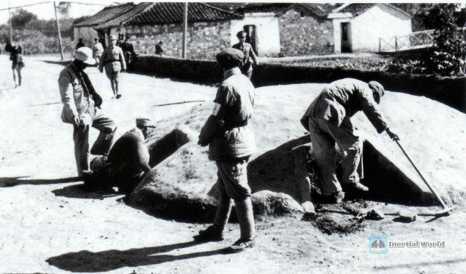
From February 21 to 23, the front command held a meeting of more than 1,000 troops of the participating troops, summarized and promoted the experience of Yuncheng’s offensive operations, organized and observed the 23rd Brigade’s offensive actual combat exercises, and arranged to carry out grievance campaigns and military training activities for the troops, carried out in-depth political mobilization, strengthened policy and discipline education, and required full preparation for offensive angles.
In early March, the front command determined the battle deployment with the Luliang troops controlling the 8th Column of the Kuomintang Army in the west of the river in the south of the city, the 13th Column in the east of the city, and the Taiyue troops in the north of the city. In a concentric encirclement, first clear the periphery of Linfen, remove the city defense strongholds, and strive to eliminate the enemy’s main force in the periphery, and then attack the city.

On March 5, the 13th Column was annihilating a part of the 66th Division of the Kuomintang Army that was disturbing Xiangling on the west bank of the Fen River. The front command received intelligence: In order to save the crisis in the northwest battlefield, Hu Zongnan wanted to withdraw his reorganized 30th Brigade from Linfen, airlift it to Xi’an, and increase troops in Luochuan. The front command decided to launch the battle 3 days in advance and ordered the 24th Brigade of the 8th Column to rush day and night to attack the Yaomiao Airport in the city.
On the morning of March 7, more than 10 enemy transport planes were carrying a regiment of the reorganized 30th Brigade and preparing to take off. Our 24th Brigade arrived at lightning speed, and after a burst of gunfire and grenades, two enemy planes were destroyed, and eight fled in panic, taking only the brigade commander Yin Yingzhou and four companies. Most of the rest were forced to retreat into the city, and the enemy’s troop transport plan failed.
From March 8 to 16, the troops approached the suburbs of the city in three routes according to the original combat deployment of the front command. The 8th Column was located in the south of the city and captured the strongholds of Guchai Village, Zhangru, Guo Village, Qiaojiazhuang, and Yaomiao Palace. The Taiyue troops captured the strongholds of Gaohedian, Nanbei Jiaobao, Nanbei Xiaocun, etc. from the east of the city. After the 13th Column annihilated the enemy west of Fen (River), it returned in the rain to take over the defense area in the east of the city and began to remove the outer strongholds. Originally, our army wanted to resolve the battle in a short time at a small cost, but because we underestimated the characteristics of the enemy’s fortifications and the troops were somewhat dispersed, we failed to achieve the expected results at the beginning.
From March 23 to 27, the 8th Column fought from the south to the north of the city. The 24th Brigade attacked Xinglong Hall twice and suffered setbacks. Brigade Commander Wang Yong was shot and killed. The Taiyue troops captured No. 4 and No. 5 bunkers twice, but lost them again. The 13th Column attacked Dongguan twice and failed again and again. The battle was not ideal and very difficult. At that time, there was a soldier named Li Haishui in the 7th Company of the 117th Regiment of the 38th Brigade of the 13th Column. He was wounded in the battle and fainted in the bunker. The troops had just left the position when the enemy began to counterattack again. He woke up and climbed out of the pit, desperately organized several wounded soldiers, and repelled the enemy’s counterattacks six times in a row, and covered the safe transfer of 16 wounded soldiers, showing the heroic and tenacious fighting spirit and noble revolutionary qualities of the people’s soldiers. General Xu issued a timely order to commend Li Haishui’s heroic deeds, and named his company "Li Haishui Company", calling on officers and soldiers to learn from him and complete the combat mission successfully.
In order to carry forward the achievements, correct the mistakes, and facilitate the next battle, on March 31, the front command held a meeting of cadres above the regiment level to summarize the experience and lessons, readjust the combat deployment, and decided to concentrate the main force to attack Dongguan first. At the meeting, Commander Xu pointed out: "Tunnels are the main means of attacking the city at present. We must implement Tuxingsun’s tactics, drill underground, and use tunnels to break the city." The 8th Column had experience in breaking the city with tunnels when fighting Yuncheng, so the task of attacking Dongguan was given to its 23rd Brigade.
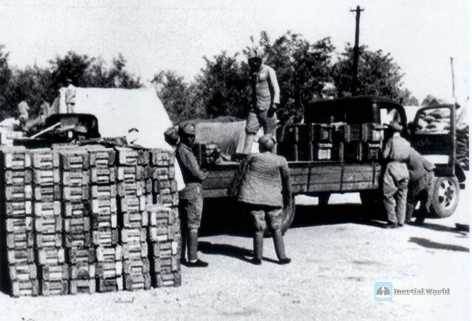
On April 4, the 68th Regiment of the 23rd Brigade took over the friendly position of the power plant and decided to dig 4 tunnels from the underground of the power plant to the Dongguan city wall. At the same time, a fierce battle for the outer trench broke out on the ground. The 23rd Brigade concentrated its artillery fire to destroy and block the enemy’s firepower points on the city 300 meters from the attack front, covering the 68th Regiment’s advance with 4 cover communication trenches and expelling the enemy on the outer edge of the outer trench.
The enemy made a dying struggle, blocking with artillery fire and continuously counterattacking with infantry; while building bunkers at the bottom of the outer trench and digging "T"-shaped trenches to prevent our tunnels from approaching. After repelling the enemy’s counterattack, the 68th Regiment extended the cover communication trench to the edge of the outer trench, using the cover of night to cover the squad to enter the outer trench, annihilate the enemy in the trench, and repair the fortifications. Although the enemy continued to roll mines, throw explosives, and pour water into the outer trench from the city, they all failed one by one under the heroic resistance of the soldiers, allowing the 23rd Brigade’s blasting tunnel to pass through the outer trench smoothly and reach the Dongguan city wall.
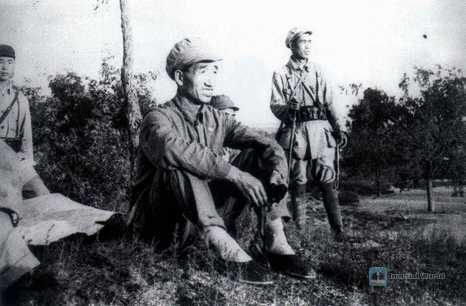
On April 9, the 23rd Brigade had dug the charge chambers for the four tunnels. That night, a transport team of 240 people transported 8,700 kilograms of explosives into the tunnels, and the three blasting tunnels were quickly loaded and ready to be detonated at the command. The 68th and 69th Regiments, which were responsible for the assault mission, had entered the attack starting position.
At 4 p.m. on April 10, the artillery fire became more and more intense. Our army’s howitzers and field artillery fired suppressive shots at the East Gate Tower and the enemy’s artillery positions in the city, destroying the East Gate Mansion Gate Tower and the salient at the southern corner of the East Gate City. Then all kinds of artillery fire were fired at the same time, aiming at the key points on the city, the city, and the areas where the troops were scheduled to pass, and fired fiercely for two hours.
Two red flares rose high in the dusk sky. Brigade Commander Huang Dingji loudly conveyed the command of the front command over the phone: "Assault troops, get ready, climb the city wall as soon as the explosion sounds." The cadres and soldiers of the 68th and 69th Regiments were all lying in the attack position. "Boom! Boom!" With two loud noises, the earth shook, and two pillars of earth rose up on the East Gate wall, splitting into two large gaps of more than 50 meters and more than 20 meters wide.

The commander of the vanguard shouted in the smoke: "The explosion was successful, comrades, charge!" The soldiers: responded, rushed into the smoke like an arrow from a bow, and climbed onto the top of the East Gate city wall against the falling bricks. The 1st Battalion of the 69th Regiment advanced towards the East City, and the 3rd Battalion rushed through the inner trench and got into the central bunker where the enemy was guarding the inner trench. Before a platoon of enemies could come to their senses, bayonets were pointed at their chests. Under the fierce attack of our army, the enemy’s command failed. Liang Peihuang’s "eight kill" order (those who do not advance when ordered to attack will be killed; those who do not advance when ordered to provide assistance will be killed; those who abandon their positions without orders will be killed; those who do not provide assistance when the neighboring positions are attacked will be killed; those who do not insist on their positions when the neighboring positions are trapped will be killed; those who fire indiscriminately and falsely report ammunition and no enemy corpses in front of the positions will be killed; those who lie about military intelligence and try to shirk responsibility will be killed; those who do not stand up and take over the duties of the chief officer when the chief officer is injured or killed will be killed) was also useless. Some of the disrupted enemy groups became prisoners, and those who resisted were either killed or surrendered after being attacked and shouted. The entire East Gate was shrouded in the sound of gunfire, and several places were burning with raging fire, lighting up the night sky red.
When the siege troops reached the enemy’s divisional command post at the intersection of Dongguan, the commander of the enemy’s 66th Division, Xu Qichang, fled to the main city’s Great East Gate with his remaining troops and tightly closed the gate. Dongguan was occupied by our army.
The tunnels showed their power, breaking the city and annihilating the enemy
When the gunshots at Dongguan became less frequent, the fire weakened, and the east was getting white, the 23rd Brigade handed over the defense to the 24th Brigade and rushed to the east of the city to participate in the battle to seize the city climbing position and to carry out tunnel operations to blast the main city.
As our army approached the main city, the enemy became more crazy. In addition to strengthening defense and constantly counterattacking, they actually released gas on our positions. Enemy planes taking off from Taiyuan, Tianjin, and Xi’an bombed day and night, and most of the houses in Dongguan were blown up. The battle for the city climbing position was extremely fierce, forming a three-dimensional battle in the air, on the ground, and underground. This was the most intense, tense, difficult and complicated stage of the struggle between the enemy and us in the Linfen Campaign.
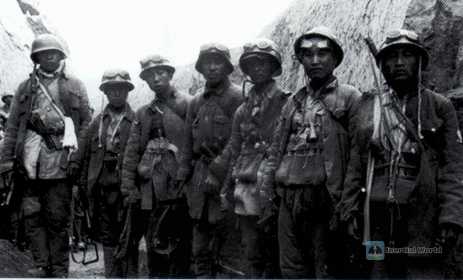
On April 15, the front command decided to first control the outer trench from the east and south sides of the city, and then use the Great East Gate as the main breakthrough point, adopt tunnel blasting as the main means of siege, and launch a general attack after completing a large amount of earthwork and other preparatory work. Therefore, the deployment was adjusted again: the 13th column was determined to be from the Great South Gate to the southeast corner of the city, the 8th column from the southeast corner to the north of the Great East Gate, and the Taiyue troops broke through from the second salient north of the Great East Gate to the northeast corner of the city. The three troops attacked and advanced at the same time, seized the city climbing position, and covered the tunnel operation.
The 23rd Brigade was responsible for the siege mission between the first and second salients of the city wall north of the Great East Gate. It was decided to form a 180-man tunnel operation team with engineers as the backbone to dig tunnels for breaking through the city. The 67th Regiment was responsible for controlling the outer trench, covering the tunnel operation, and opening up a road for the troops climbing the city.
From Dongguan to the north, along the outer edge of the outer trench, a railway stretched out, with several broken carriages on the rails, forming a "locomotive" position. A piece of high ground on the outer edge of the outer trench was designated as position No. 103. Because there was a big tree on this position, and there was an old crow’s nest on the tree, it was also called the "old crow’s nest" position. The enemy placed about 1 battalion of troops on this position.
On April 20, after the 67th Regiment captured the "locomotive" position, the tunnel operation team for breaking through the city started to dig from here. Then, the 67th Regiment continued to advance towards the No. 103 position. When a platoon of the 2nd Battalion rushed up, because the follow-up troops could not go up, the platoon all died heroically in the hand-to-hand combat with the enemy. The brigade command felt that it was necessary to combine tunnel warfare and ground warfare to capture the 103 position.
Brigade Commander Huang decided to dig two tunnels at the same time, one to bombard the enemy position, and the other as a hidden trench to block the enemy reinforcements. After digging for 3 days, the sound of digging soil was faintly heard from the other side in a tunnel on the left. At night, the comrades at the entrance of the tunnel felt something was wrong. Why didn’t the soil transporter come out for a long time, so they sent two people to check. After a while, the two ran out and shouted that they were poisoned. After first aid, 3 comrades woke up and the other 3 comrades died. Afterwards, it was clear that when the enemy noticed that I was digging a tunnel, they took counter-operation and carried out poisoning and sabotage. A tunnel on the right dug into a cave in the enemy’s position, and shot at the enemy for a while and retreated. This tunnel was also blocked by the enemy.
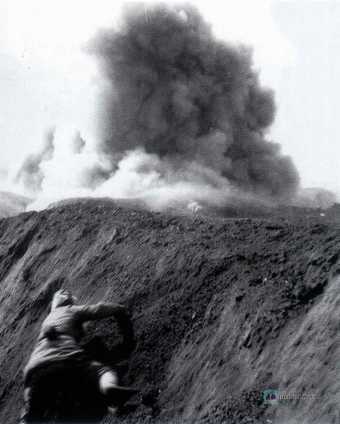
At this time, Comrade Pan Fang, the political instructor of the 2nd Battalion, ordered Li Changchun, the instructor of the 4th Company, to lead the soldiers to dig again. After accepting the task, Li worked hard with the soldiers day and night for several days, and the progress was very fast. One day, a sudden loud noise woke up Pan Fang who was dozing against the wall. "Is there something wrong with the tunnel again?!" When he ran to the entrance of the tunnel, he saw that the soldiers were standing there stupidly, with their heads down, and said nothing. The entrance of the tunnel was like a big chimney, with smoke and dust. It turned out that the enemy was releasing poison gas to us again. Li Changchun and three soldiers died at their combat posts. Pan Fang said to everyone sadly: "Comrades, blood debts must be repaid with blood!" He paused, looked at everyone, and then said: "We must create an illusion for the enemy. In military tactics, it is called ’the plan cannot be used again’. We will do the opposite and continue to dig forward in this tunnel."
On May 4, the tunnel of the 2nd Battalion was dug. With a loud bang, the enemy’s No. 103 position was overturned. The soldiers immediately swept through this position like a whirlwind. The enemy lost a battalion of troops on this position and bombarded me day and night. The entire position became a loose scorched earth with indistinguishable craters, and ground fortifications could not be built at all. The soldiers repaired the communication trenches and covered trenches under the artillery fire. Many soldiers were injured by the enemy’s artillery fire when they stretched out their arms to dig soil from the communication trenches. The enemy used a regiment of troops in the outer trench and launched five counterattacks, but failed to recapture the position.

The enemy had experienced the power of the "earth plane" in Dongguan, so they racked their brains in the defense of the main city and pieced together many tricks to deal with tunnel explosions. The enemy dug a large number of "T" and "Y" shaped defense tunnels, with two layers of upper and lower layers on the outer edge of the outer trench and one layer on the outer side of the city, as dense as a spider web. There were 27 tunnels on the front of the 23rd Brigade alone. The enemy set up listening urns in the tunnels, forcing its soldiers and residents to take turns to listen to the sounds of our army’s underground operations day and night. If they found any movement, they would dig tunnels against us, and if they were close, they would destroy our tunnels with explosives. On the ground, they also used various means to scout the location of our tunnel entrances. If they saw any signs, they would bombard us with planes and artillery fire, and constantly send small troops to harass our tunnel operations.
In order to crush the enemy’s sabotage and protect the safe operation of the tunnel, we launched a tit-for-tat struggle with the enemy, using digging, listening and bombing. The 23rd Brigade had excavation teams, monitoring teams and combat teams in the main tunnel. When we heard the sound of the enemy’s operation, we took the initiative to approach the enemy and exploded first. The enemy suffered several losses and was afraid of bombing, so they dared not be as presumptuous as they did at the beginning. Our main tunnel was strictly confidential and the sound was minimized. The accumulation and excavation of soil at the tunnel entrance were strictly camouflaged. At the same time, we strengthened monitoring. When we found the enemy digging, we turned around the main tunnel or lured the enemy away with a branch tunnel.
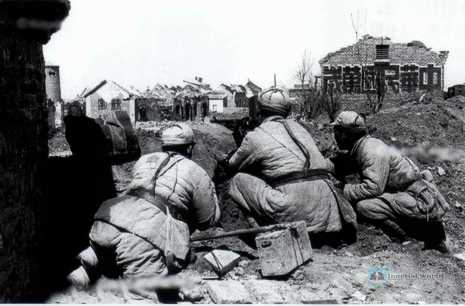
As the tunnel continued to extend, accurately measuring the distance from the tunnel entrance to the outer trench and the base of the city wall became an urgent and difficult task. At first, we tried to fire 60 artillery shells with ropes, but it was unsuccessful. Later, the scout hero Li Lailong risked his life in the middle of the night, pulled a rope and touched the enemy’s position to measure one foot at a time, and only then did he get accurate data.
By the beginning of May, the closer the tunnels were to the city wall, the more sabotage tunnels the enemy extended from the city, and the more intense the struggle was. Our army had to be particularly careful in tunnel operations. In order to prevent the enemy from noticing the operation location, digging the soil was changed to three-pronged forks and small iron shovels, walking with cotton tied to the feet, transporting soil with boats or wooden boxes, and speaking with gestures. In order to minimize the sound, the soldiers even used their chests and backs to receive the soil. The enemy dug many and dense tunnels against us, and our main tunnel had to keep turning, making it very difficult to move forward. The enemy lost the possibility of destroying our tunnels outside the city, so they concentrated their manpower to dig counter-tunnels from inside the city to the outside, and at the same time threw a large number of explosive packs, mines and incendiary bombs into the outer trenches in an attempt to collapse our army’s tunnels. By May 12, of the 15 tunnels dug by our army on the east side of the city and the more than 40 shield tunnels dug around the sides and above the tunnels, only three tunnels of the 23rd Brigade remained. The rest were all blown up by the enemy, some of which were blown up more than 10 times.
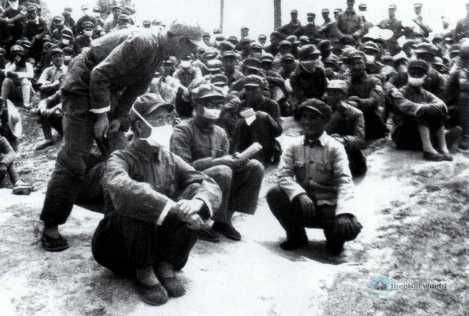
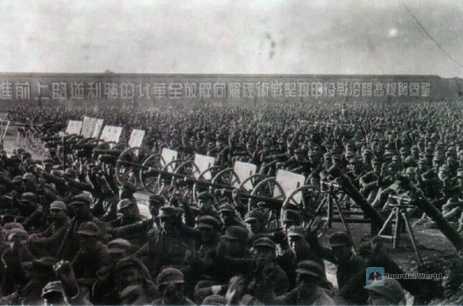
After more than two months of siege in Linfen, the enemy suffered heavy casualties. They had to force local government personnel, inspectors, students, etc. to join the battle several times. Due to the depletion of troops, the baggage battalion was also driven to the east city area to defend.
The enemy’s supplies were even more seriously lacking. Liang Peihuang helplessly called out to Chiang and Yan: "The ammunition is exhausted. Please drop 20,000 grenades from the air. Otherwise, we can’t hold on." Although the defending enemy’s 30th Brigade had the best treatment, it had not eaten oil for two months. More than 7,000 wounded soldiers had no medicine to treat, and their morale was low. There were generally "two fears" - fear of cold guns, fear of attacking from the east city, and fear of riding "homemade planes"; "four deaths" - being killed in counterattacks, being killed in the city, being killed by the supervisory team when retreating, and being executed for passive sabotage.
The defending enemy was at its wits’ end, and Chiang and Yan kept trying their best to cheer them up. Yan Xishan telegraphed Liang Peihuang three times, asking him to "defend to the death", "successfully save the city", "die for the city", "defending Linfen is defending Taiyuan"; Chiang Kai-shek announced at the pseudo-National Congress: "Determined to defend Linfen!" Liang Peihuang, encouraged by Chiang and Yan, attempted a last-ditch struggle. In a telegram to Yan Xishan, he said: "I have made up my mind to live and die with Linfen." He also played the so-called "purge disguise" trick in the city, announcing: evacuating the position is fake, not wanting to serve in the army is fake, women not wanting to serve the army and not wanting to marry soldiers is fake, and even those who don’t like to talk are fake, trying to maintain the remnant by massacre.
On May 16, the 117-meter and 115-meter long tunnels dug by the 23rd Brigade were finally completed. The troops decided to load explosives overnight. Just after dark, it suddenly started to rain. Zhang Xiangshan, director of the Political Department, led the troops to form a long line of about 300 people from the explosives depot to the tunnel entrance, and passed the explosives into the tunnel in the rain. In order to prevent the explosives from getting wet and affecting their effectiveness, the cadres and soldiers took off their coats and covered the explosives with them.
Engineer hero Zhang Guiyun led 18 people to load the explosives in two shifts. The powder splashed, choking their throats and making it difficult to open their eyes. The black explosives sprayed them all so that except for opening their mouths to breathe and showing two rows of white teeth, their faces and hands were black. Overnight, 12,400 kilograms of black explosives were loaded into the explosives room of one tunnel, and 6,000 kilograms of yellow explosives were loaded into the explosives room of another tunnel.
After the preparations for the siege were completed, the front command decided to launch a general attack on May 18. At this time, there were still more than 30 hours before the time to climb the city. Although everyone seemed calmer than usual on the surface, they were secretly nervous. The engineers guarded the tunnels carefully with the joy of victory. They knew that there was no room for error at this moment. The signalmen took the telephone and held pliers in their hands, constantly inspecting the lines along the communication trenches. They knew how important it was to ensure the transmission of the commander’s orders after the battle started. The medical staff were busy checking bandages, medicines and temporary surgical equipment. The assault troops were wiping their weapons and ready to go.
At this time, the tunnel troops suddenly heard the sound of the enemy digging closer and closer to our tunnel medicine room, and the situation was extremely critical. The brigade headquarters immediately reported the situation to the forward command. Commander Xu immediately decided to launch an attack in advance.
At 7:30 p.m. on May 17, Commander Xu issued an order to attack the city. "Bang, bang, bang", as three waves of red signal flares soared into the air, a thunderous sound was heard, as if the sky was collapsing and the earth was cracking. The "earth plane" flew into the sky, the city wall blossomed, and a stream of earth pillars shot up into the sky. Then, with the sound of the loud military bugle, our assault troops climbed the breakthrough point on the ruins after the explosion, and rushed into the depths rapidly.
The 68th Regiment developed northward along the city wall, quickly controlled the northeast corner of the city, and occupied key points such as the Old North Gate and Wanshou Palace. The 69th Regiment of the Central Assault Force, after fiercely attacking and rushing, annihilated the stubborn enemy in the inner trench, and quickly captured the Iron Factory Shaolulun, Guandi Temple, crossed the North Street, and went straight to Liang Peihuang’s command post. The friendly 24th Brigade and the 30th Brigade also made rapid progress, and soon captured Bafululun, Drum Tower, Tiefu Temple, and Jinmen Tower, and eliminated the enemy in East and West Street and the area to the south.
At midnight on the 17th, the 23rd Brigade joined forces with its brother troops at the former "garrison yamen" - Liang Peihuang’s command post. The next day, Liang Peihuang was captured in the wheat fields in the western suburbs. He was neither "successful" nor "married", but added a "lieutenant general deputy commander" to our army’s prisoner camp.
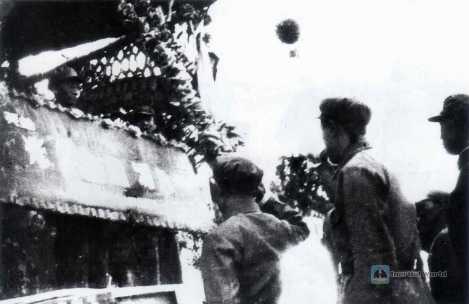
The victory of the people
After 72 days and nights of fighting, Linfen City was declared liberated, and Pingyang Prefecture was transformed. The results of this battle were brilliant: the 30th Brigade of Hu Zongnan’s troops and all the troops were annihilated. 2 regiments, 1 supplementary training regiment and the 27th Brigade Artillery Battalion; Yan Xishan’s 66th Division and 2 local supplementary training regiments, 6 security regiments; Chiang’s 38th Army Rear Office, the 5th Branch of the Joint Logistics Headquarters, the 7th and 212th Stations, Linfen Air Station, the People’s Service Brigade of the Puppet Ministry of National Defense, etc., a total of more than 25,000 people, captured alive more than 18,000 officers and soldiers including Liang Peihuang, the deputy commander of the enemy’s 6th Army and the commander of Jinnan Security.
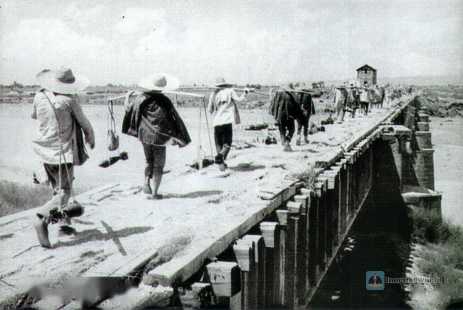


This campaign also shot down 5 enemy planes. More than 300 howitzers, mountain guns, anti-tank guns, pursuit guns, etc., more than 1,000 light and heavy machine guns, more than 7,000 submachine guns and rifles, as well as a large number of various bullets, shells, yellow explosives, and communication equipment such as walkie-talkies, radio stations, and telephones were seized. The enemy had 9 locomotives, 126 carriages, 154 cars, 616 mules and horses, more than 8 billion yuan in counterfeit currency, and parachutes. More than 13,000, a repair shop and an artillery shell factory also fell into the hands of our army.
The victory of this battle eliminated the last enemy stronghold in southern Shanxi, connected the two liberated areas of Taiyue and Luliang, effectively coordinated our army’s operations in the Central Plains and Northwest battlefields, and created conditions for advancing into Jinzhong and destroying the main force of Yan Xishan’s troops. On May 19, the Central Committee of the Communist Party of China sent a congratulatory message: "Celebrating your great victory in liberating Linfen and completely annihilating the enemy defending Yan and Hu. I hope you will continue to work hard to destroy all enemy forces and liberate North China."
The Linfen Campaign was a famous urban assault campaign conducted by the Chinese People’s Liberation Army during the War of Liberation. Chairman Mao Zedong pointed out in a telegram to Lin Biao, Luo Ronghuan and Liu Yalou on June 1 that the nine brigades of our army had gained experience in attacking cities in the Linfen Campaign, which was a very meaningful victory. On June 4, Comrade Xu Xiangqian, on behalf of the leading organs of the 1st Corps of North China, awarded the 23rd Brigade of the 8th Column of the Shanxi-Hebei-Shandong-Henan Military Region the banner of the honorary title of "Glorious Linfen Brigade".
The victory of the Linfen Campaign was the victory of the people’s war. In this campaign, our army relied closely on the people, and the people gave our army all support. Before the war, the people of more than 10 counties around Linfen and as far as Xiangyuan, Licheng, Huguan and other counties in Taihang heard that our army was attacking Linfen, and they were extremely happy. They told each other and enthusiastically supported the front.
During the battle, the troops were insufficient to transport food, ammunition and wounded soldiers, so the local government quickly organized more than 40,000 militiamen and civilian workers to directly participate in the war. The troops needed shelter wood to build combat fortifications. More than 100,000 door panels, more than 100,000 sacks, and tens of thousands of purlins were delivered to the troops in less than a week. Some newlyweds took out their wedding quilts to cover the wounded. Some old men also contributed their coffins to the troops for transporting explosives. Some migrant workers carried artillery shells across the blockade area and rolled them to the battlefield. There are countless touching deeds of the people in southern Shanxi who fully supported the war. They are the strong backing and reliable guarantee for our army to conquer Linfen.




